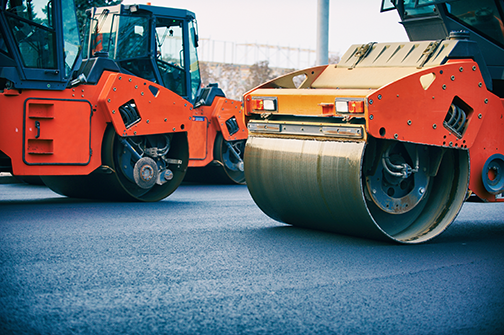It’s difficult to imagine modern life without plastics. Our cars (seat cushions, air bags, bumpers, dashboards…), fashion (nylon, spandex, polyester, faux fur…), homes (carpeting, foam insulation, vinyl siding, composite decking…), appliances (televisions, coffee makers, alarm clocks, electric toothbrushes…), sports (football pads, bicycle helmets, surfboards, skis…), health (preemie incubators, bandages, hygienic medical packaging, syringes…), and of course food packaging (tamper resistant film, takeout boxes, milk jugs, leftover containers…). Plastic is the world’s most advanced, diverse material creating everyday conveniences, medical marvels, and cutting-edge technologies. Plastic is a key material for innovation and for helping us reduce greenhouse gas emissions and tackle climate change. Life Cycle Assessments demonstrate that plastic is the best material across many applications to reduce emissions outputs, reduce the use of water and energy and most efficiently use valuable resources. Not only do plastics provide these benefits, but recycling also ensures that these products can be reused, which creates a circular economy and protects our environment.
New and exciting innovations in plastics have contributed to sustainability advances across many sectors, ranging from recycled materials for packaging to creating sustainable homes.
Creating Sustainable Infrastructure
Plastics are vital to creating durable and sustainable infrastructure. Plastics offer a more efficient way to build homes and are increasingly being relied upon in construction. Plastics are cheaper, lighter, recyclable, more durable, and consume less energy than steel and concrete alternatives, making them vital to the industry. Pipes, wiring, flooring, wall covering, water proofing, valves and more are all made of plastics. For decades, plastics have been used to improve infrastructure due to the material’s versatility. Plastics are already being used worldwide to create stronger pavement for highways, make drainage systems more effective, and make public walkways and pathways more durable. The construction industry is America’s second-largest consumer of plastics.

Building More Sustainable Cars
Plastics help automakers build a more sustainable future. Modern cars on the road couldn’t exist without plastics—in fact, plastic parts account for about 50% of modern autos but only 10% of the total weight. Plastics help keep vehicle passengers safe, too. From polyester fiber seatbelts to nylon fabric airbags and splinter-proof protective coatings for automotive glass, many modern automotive safety components rely on plastic. Further, fiber-reinforced polymer crumple zones—or the areas that absorb impact during a collision—absorb four times the impact as steel, reducing passenger injuries. Auto manufacturers are also taking strides to ensure the industry fits into global goals to improve circularity. These innovations ensure that industry leverages automotive plastics for all they’re worth, maximizing its lifecycle and value.

Improving Classrooms
Plastics are making schools safer and more modern. Plastics’ inherent affordable and sanitary qualities help schools to keep our students bright, healthy and equipped with modern technology. From everyday tools like pens, pencils, and notebooks, to the modern tools of the 21st century that make digital learning possible, plastics have found a lasting place in America’s schools. Classrooms are the learning labs for children to develop important social skills and experiment through touch. While crucial to learning development, high-touch surfaces can unfortunately serve as breeding grounds for germs and bacteria to thrive. Plastic is inherently sanitary, making it ideal for everyday use in high-touch places and activities. Laptop computers like the popular Chromebook series, made from post-consumer recycled plastics, are specifically made to serve the needs of the education sector. These durable and affordable Chromebooks are affectionately described as “schoolyard tough,” and able to withstand more wear and tear. Plastics are supporting schools in a variety of ways, all while keeping students safe, healthy, and equipped with affordable technology. Whether writing with a mechanical pencil or doing an experiment in science class, plastics in American schools are helping mold students into the next generation of leaders and innovators.

Creating Safe & Efficient Pharmaceuticals
Many medical and pharmaceutical products rely on plastic packaging to maintain their efficacy and safety. Ever stop and look around during a doctor or hospital visit? There are dozens of medical instruments and hygienic tools made possible by plastics. From exam gloves to sterile syringes to IV tubes, plastics are ubiquitous in the medical field because they help protect us, guard against contamination, and save lives. If you think about it, all those plastic medical tools you take for granted were once revolutionary. And plastics will continue to help drive innovations in medical care that will help people all around the world for decades to come.

These are simply a handful of examples of how plastics make our everyday lives possible. Look around you. Plastic likely makes up most of your surroundings. Plastic is so popular because it is lightweight, it is durable, and yes, it is sustainable. Unfortunately, because so much has carelessly ended up in the environment, it has gotten an unwarranted bad reputation. Plastic waste, just as paper or glass waste, in the environment is unacceptable. Now that you know the value of plastics, more likely you are to participate in the circular economy! Plastics must be disposed of responsibly and recycled in order to be sustainable.